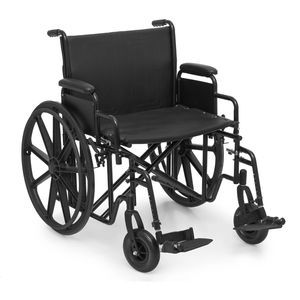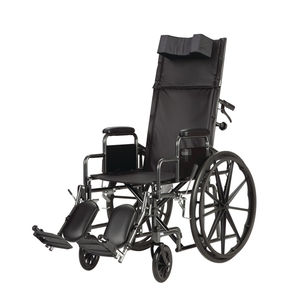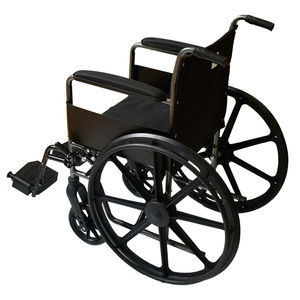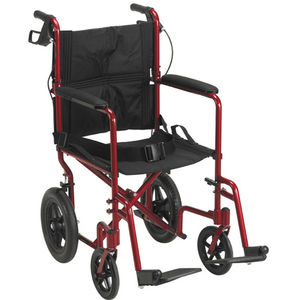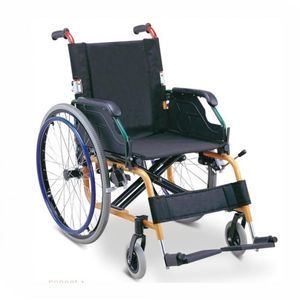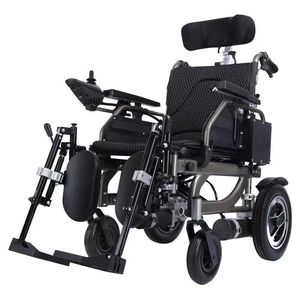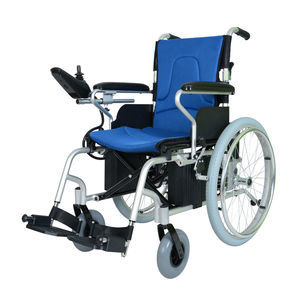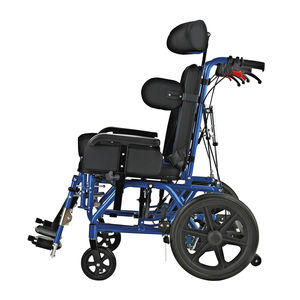
- Rehabilitation
- Mobility aid
- Manual wheelchair
- Besco Medical
- Company
- Products
- Catalogs
- News & Trends
- Exhibitions
Manual wheelchair BES-WL905indoorfoldingMRI-compatible
Add to favorites
Compare this product
Characteristics
- Propulsion
- manual
- Applications
- indoor
- Options
- folding, MRI-compatible
- Total height (cm)
89 cm
(35 in)- Total length (cm)
104 cm
(40.9 in)- Total width (cm)
67 cm
(26.4 in)- Tare weight (kg)
17 kg
(37.5 lb)- Max supported weight (kg)
110 kg
(242.5 lb)
Description
Name: MRI Wheelchairs
Model No.: BES-WL905
Product Name: MRI Wheelchair
Brand: BESCO
MOQ: 10 units
Keywords: MRI Wheelchairs, Nonmagnetic MRI Wheelchairs, MR-Conditional Wheelchairs
Sample: Available
Lead time: 25 days
Payment Term: T/T in advance
Country of Original: China
Weight Capacity: 110 kgs
Port of Loading: SHANGHAI
Frame Material: Plastic
Price: US880
Standard Specifications: L1040*W670*H890/MM
Folded Dimensions: L1040*W300*H890/MM
Seat Width: 460mm
Seat to Armrest: 220mm
Seat to Back Cushion Height: 400mm
Seat Depth: 400mm
Material: Non-magnetic Special Aviation Material
Net Weight: Approximately 17kg
Load Capacity: ≤110kg
Material: Aviation plastic
Product Structure: Positioning wheels, steering wheels, chair frame
Front wheels: 7" PU foam wheels
Rear wheels: 24" PU non-inflatable solid wheels
Application: For use during MRI examinations (no movement or transfer in a strong magnetic field, no suction, no impact on MRI examinations).
Notes:
- Wheelchair users are strictly prohibited from being transported in any form of transport vehicle while in their wheelchair.
- Do not sit on a wheelchair and tilt it backwards in a vehicle without an anti-tilt device.
- When using a wheelchair, do not tilt it to one side or lift it.
- Do not use the brakes while the vehicle is in motion.
- Do not stand on the pedals, as this may cause the wheelchair to tip over.
An MRI wheelchair is a specialized chair made from non-magnetic materials to safely transport patients into an MRI suite, which has a powerful magnetic field. Unlike standard wheelchairs, MRI wheelchairs are constructed with non-ferrous components and often have prominent "MR" markings to prevent them from being confused with regular chairs.
Key features and purpose:
- Non-magnetic materials: Built with non-ferrous metals and special polymers so they are not pulled into the MRI machine's magnetic field.
- Safety: Essential for patient and equipment safety, as standard wheelchairs can contain ferromagnetic materials that pose a serious hazard in an MRI environment.
- Identification: Clearly marked with "MR" labels or other distinctive colors to prevent accidental use in a non-MRI area and to distinguish them from magnetic wheelchairs.
- Variety of sizes: Available in a range of sizes and weight capacities to accommodate different patient needs.
- MR Conditional: The term "MR Conditional" indicates that the wheelchair is safe to use in an MRI environment under specific conditions, such as within a certain magnetic field strength (e.g., 3 Tesla or 7 Tesla).
To use an MRI wheelchair, follow standard wheelchair operation while adhering to specific safety protocols for the MRI environment, such as ensuring the wheelchair is MR-safe and performing patient transfers outside of the strong magnetic field. MRI wheelchairs are made of non-magnetic materials like aluminum or titanium and are clearly marked to distinguish them from standard, magnetic wheelchairs. Use the hand rims to propel forward and backward, or to turn by pushing one wheel more than the other. Always secure the brakes and ensure footplates are clear when transferring.
Before using the wheelchair:
- Check for MR safety: Ensure the wheelchair is labeled as "MR Safe" or "MR Conditional" and is made of non-ferrous, non-magnetic materials like aluminum or titanium.
- Perform pre-screening: Use Ferromagnetic Detection Systems at the entrance to the MRI area to ensure no ferromagnetic objects are entering the room.
- Follow safety protocols: Place the wheelchair in a designated, labeled area within Zone III (the controlled area before Zone IV, the scanner room).
How to operate the wheelchair:
- To move forward: Place your hands on the metal rims on the outside of each wheel and push down on them simultaneously.
- To move backward: Pull the rims backward.
- To turn: Push more vigorously with the hand on the side you want to turn toward, or hold one rim still while pushing the other forward.
Patient transfer and safety:
- Position the wheelchair: Place the wheelchair near the boundary of Zone III and IV to allow for smooth patient transfers without bringing unnecessary items into the scanner room.
- Use the brakes: Always engage the brakes and ensure footplates are out of the way before and during any transfer to or from the chair.
Technical Specifications / Features:
- Model No.: BES-WL905
- Standard Specifications: L1040*W670*H890/MM
- Folded Dimensions: L1040*W300*H890/MM
- Seat Width: 460mm
- Seat to Armrest: 220mm
- Seat to Back Cushion Height: 400mm
- Seat Depth: 400mm
- Material: Non-magnetic Special Aviation Material / Aviation plastic
- Net Weight: Approx. 17kg
- Load Capacity: ≤110kg
- Front wheels: 7" PU foam wheels
- Rear wheels: 24" PU non-inflatable solid wheels
- Frame Material: Plastic
- MOQ: 10 units
- Lead time: 25 days
- Country of Origin: China
- Port of Loading: SHANGHAI
Catalogs
No catalogs are available for this product.
See all of Besco Medical‘s catalogsRelated Searches
- Wheelchair
- Outdoor wheelchair
- Indoor wheelchair
- Wheelchair with legrest
- Manual wheelchair
- Folding wheelchair
- Black wheelchair
- Electric wheelchair
- Aluminium frame wheelchair
- Height-adjustable wheelchair
- Walker
- 4-wheel walker
- Wheelchair with headrest
- Reclining wheelchair
- Rollator with seat
- Height-adjustable rolling walker
- Walking aid
- Cane
- Wheelchair with armrests
- Passive wheelchair
*Prices are pre-tax. They exclude delivery charges and customs duties and do not include additional charges for installation or activation options. Prices are indicative only and may vary by country, with changes to the cost of raw materials and exchange rates.


